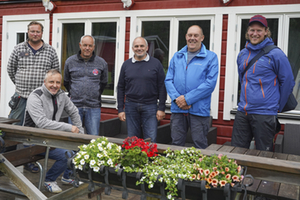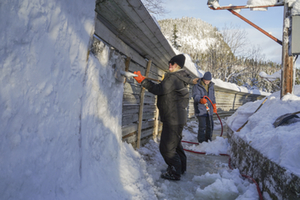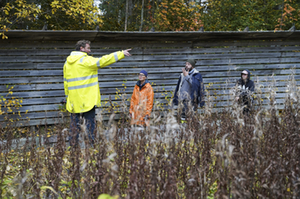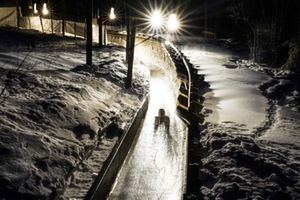Reactivation or modernisation of the track in Hammarstrand (SWE)

Hammarstrand (FIL) The original artificial track with natural ice in Hammarstrand, Sweden, was built between 1962 and 1964. It was 1200 metres long and consisted of 13 curves. The track was known for being fast and technically demanding.
The director of sliding sports in the Swedish Skating, Sliding and Rolling Sports Federation, Niclas Bentzer, puts it in a nutshell: "The track in Hammarstrand was much appreciated by some, hated by others. As the athletes and the material improved over the years, the track was too fast and the men's start had to be shortened to 900 metres."
In 1967, the first Luge World Championships were held in Hammarstrand. These World Championships were a great success and followed by World Championships in 1975 and 1981. World Cup competitions, European Championships and junior competitions were also held in Hammarstrand.

The track was built entirely in wood from the beginning. Some of the straight parts were converted to concrete in the 1990s. However, the construction is no longer up to date and the production of ice is demanding, as a wall of a snow-water mixture has to be built first to cover the wooden construction. The lack of cooling combined with climate changes has caused great difficulties for track workers more than once in recent years.
Markus Aschauer, Chairman of the FIL Track Construction Commission, convinced himself on site in the community of Ragunda, to which Hammarstrand belongs, about the conditions and possibilities for the future of the only Scandinavian luge venue apart from Lillehammer (NOR): "Together with Robert Manzenreiter and the Chairman of the IBSF Track Construction Commission, Giacomo Dariz, we convinced ourselves on site that Hammarstrand is an attractive sliding venue with many committed helpers. The problem for the track, which is built by hand from natural ice, is the Gulf Stream in Norway. When the warm wind from the direction of Trondheim moves towards Sweden, the air temperature can rise by 20 degrees within 24 hours. The natural ice then is melting within hours and wipes out 1,200 to 1,500 man-hours of track construction."

A project study is currently underway in Sweden that is dealing with two major questions in parallel: One is the implementation of absolutely necessary measures to keep the line in Hammarstrand in its current condition. This involves for example, replacing some wooden structures, improving the lighting and the communication system for safety. Secondly, a pilot study is underway to find a long-term solution for a new modern track for luge, skeleton and bobsleigh. The project is financed by the European Structural and Investment Funds.
Markus Aschauer sees the project in a positive light: "In Sweden there are unbelievably committed and motivated workers and helpers, there are athletes, and from my point of view all that is needed is a supporting refrigeration system to bridge warm phases.
There will not be much energy costs for the maintenance of the track. In warm periods, there would only need to be some additional cooling, which would certainly work well," says the track construction expert.

Niclas Bentzer adds: "The climate studies we have done clearly show that the average temperature in Hammarstrand rises in the winter months, just like in the rest of the world. This makes it difficult to operate a luge track without the possibility of artificial ice."
The pilot study should be completed in March 2022. The sport director of the Swedish federation is confident: "Hopefully in March 2022 we will know more about the kind of track we could build, the possible financing, the ownership, the operating plans, the possible cooperation with the municipality and the region. If we decide that there is potential for a new track, I would say that the start of construction is at least two years away. Probably even more. But until then, we have to work hard to keep the existing track in operation to strengthen the commitment to the sport and show potential partners what a functioning track could mean for sledging, the community and the region," says Niclas Bentzer.
photos: Swedish Skating, Sliding and Rolling Sports Federation









